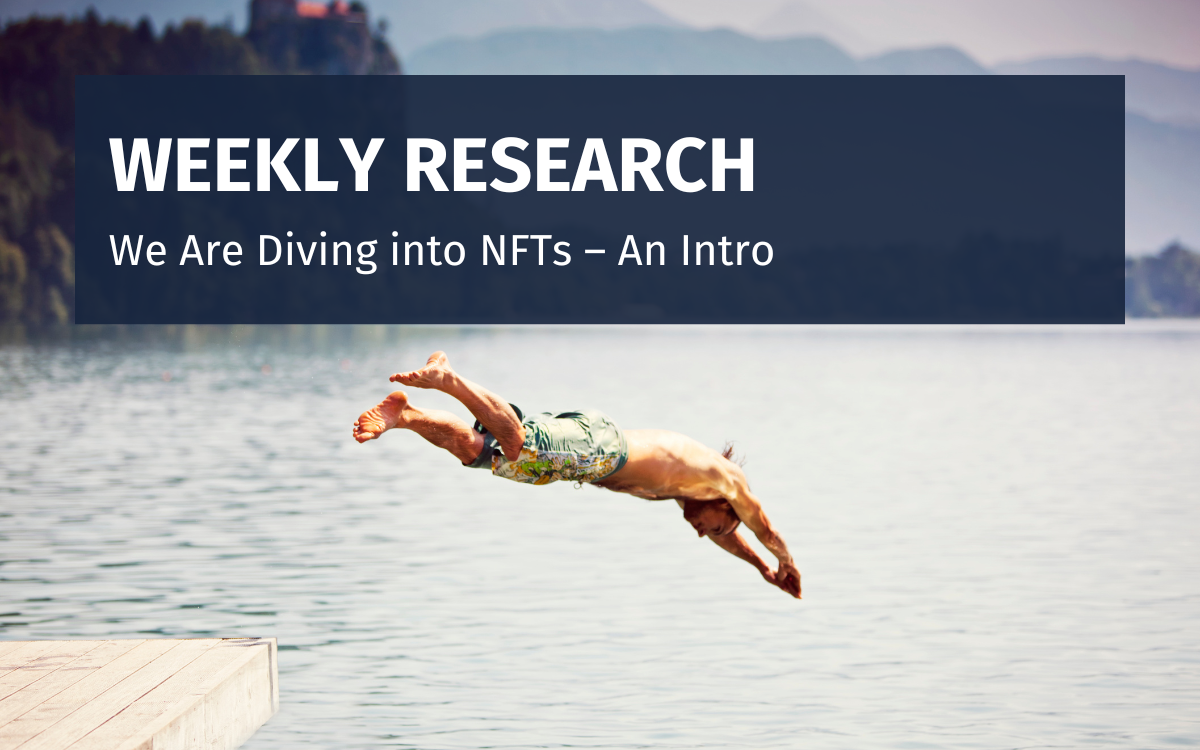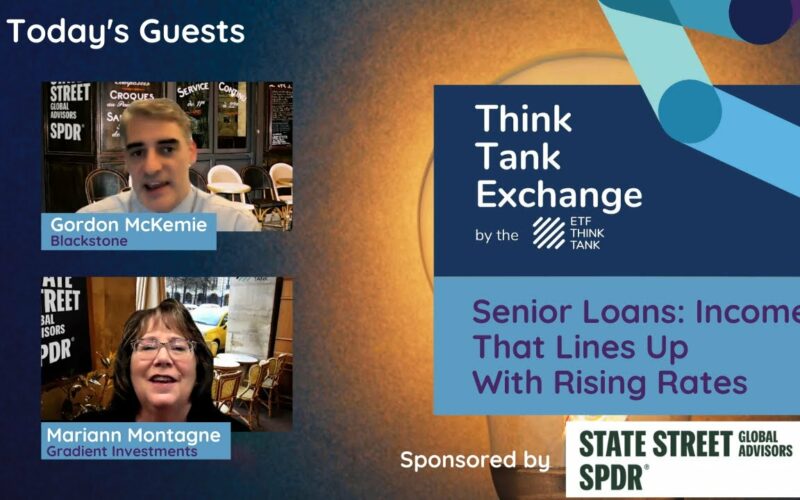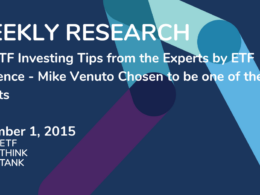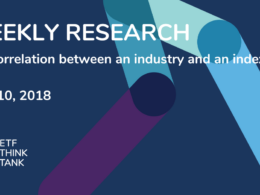Sometimes the best way to learn something is by doing it, so we decided to take the plunge into NFTs.
Our idea is simple: we are going to create, mint and share ETF Think Tank NFTs to see what we can learn about their application with the hopes of gaining better insight into their implication for the future of investing.
As advisors face challenging conversations about how to manage and advise clients on digital assets, we thought it would be interesting to run this educational experiment. The ETF Think Tank was created, after all, to help advisors navigate the ETF space, and digital assets are increasingly a part of it. It sounds like fun, too, to learn something about a nascent technology from first-hand experience.
We know that the very utility of NFTs is still an open question. Should advisors even care about this technology? In truth, it may be too early to tell, and it certainly depends on whom you ask. But since the first NFTs emerged, and especially in the past couple of years as they’ve gained traction, we’ve learned that NFTs are here to stay, sticky indeed.
If you’ve read any of Matt Hougan’s research at Bitwise, you’ve probably come across his notion that NFTs, like most innovative technologies, start out looking like “toys.” They have no apparent real utility other than, perhaps, entertainment, or at best, in the art world, some collectable value.
But as the technology advances, NFTs can have real life implications, and real-world investment cases – or so the bulls claim. If nothing else, Bitwise data shows that trading in art and collectable NFTs grew 10-fold in 12 months last year, exceeding $3 billion by the end of the third quarter. It’s still a relatively small segment in nominal value, but demand for access to NFTs is growing, and quickly.
As we walk through this NFT process, we invite you to come along and learn together what crypto enthusiasts are so excited about. Skeptics are most welcome, too, of course.
Setting The Stage
We start with a clear definition. Some describe NFTs as a technology itself, or as a digital record of an asset, or as proof of ownership, or as (famously said) the autograph rather than the original artwork. We are going to borrow Wikipedia’s description: “a non-fungible token (NFT) is a non-interchangeable unit of data stored on a blockchain, a form of digital ledger, that can be sold and traded.”
Put simply, NFTs are data. They are tokens enabled by blockchain in the same way that cryptocurrencies are, but they are non-fungible, unique, recoded in a ledger that’s governed by authentication rather than some sort of third party.
Few people have done more work on demystifying NFTs than our friend, Financial Futurist Dave Nadig, so we invited him to join us in this purely educational experiment. We are looking forward to how he will push the conversation forward, but perhaps the first lesson in this whole effort is that it never hurts to surround yourself with really smart people when you are trying to learn something new.
Here’s what to know today as we kick things off:
Our NFT collection is going to be based on the ETF Think Tanks beloved brand of ETF Nerds. Meet the originals:
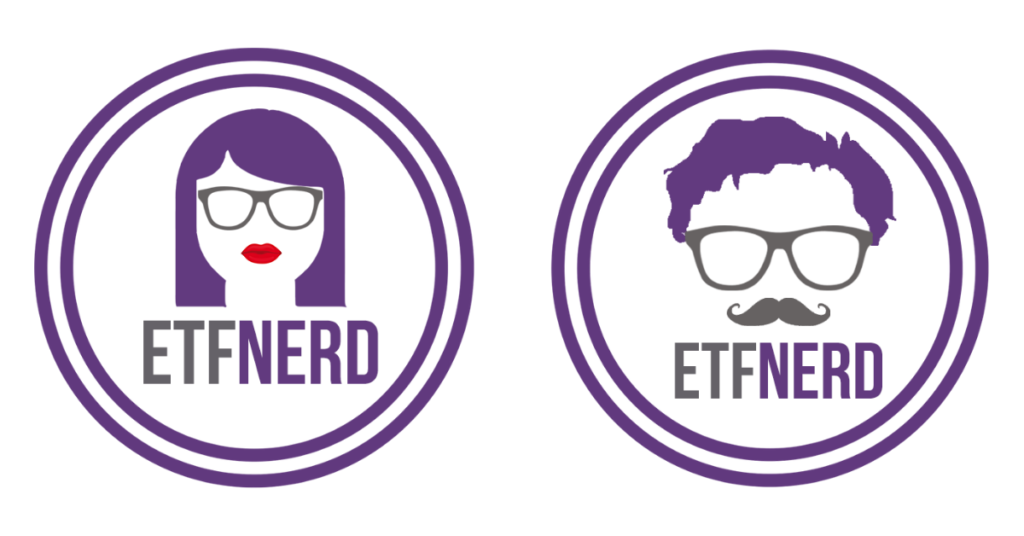
These simple original Nerds are going to be the foundation for several unique iterations of our beloved characters.
Early Lessons
As we lay the groundwork to make all of this happen, we have already learned a few things about what it takes to play in the NFT playground.
- NFTs are one-of-a-kind tokens. Creating them requires original work.
There’s no “Canva-ing” your way into NFTs. When we first started exploring what we needed to create our ETF Nerds, we quickly learned that popular tools such as the Canva graphic design application come with serious software licensing restrictions. The whole point of art and collectable NFTs is the original work underlying them. Doing it right means there are no shortcuts around that requirement.
We had to contract a graphic artist for this project. The good news is that there are several NFT designers in job platforms such as Fivver – the one we chose to work with – showcasing entire portfolios of previous creations. That makes finding a designer that aligns with your vision a fairly easy task. The bad news is that they know their trade is hot, so their time requirements and fees can be a barrier to entry.
Unless you have an in-house artist, consider outsourcing creative talent as your first real expense in the process of creating NFTs.
- NFTs require computer expertise.
This may sound like an obvious statement in a space defined by the word “digital,” but it holds true. NFTs are a computer exercise.
At a high level, our NFT effort isn’t all that ambitious. We are looking to create a hundred or so NFTs of our ETF Nerds. We want them to be fun and have a sense of humor, as artwork of this kind should (at least we think so.) But we are committed to keeping it simple because our goal is to learn and educate first and foremost.
To that end, we decided we needed only four different traits for each Nerd, each called a layer in NFT world. They are: hair, eyes/glasses, mouth/beard, and accessories (ties or necklaces.)
To produce enough originals, we asked our designer to create eight to 10 different versions of each layer – eight different pairs of glasses, eight different mouths, eight different hair styles for men and eight for women, etc. Simple enough.
But each of these layers consists of an individual image file accompanied by its own line of code. That code determines everything from shape, to color, to layer positioning within the overall NFT. The entire image is a complex collection of data.
These layers – lines of code – are then deployed when the minting (think printing) of the NFT is recorded onto the blockchain. That process itself requires additional coding if it’s to be randomized at every mint. Randomization is important if we are to pull a random selection of layers so that each NFT is a unique mix of traits, creating a one-of-a-kind ETF Nerd within our collection of ETF Nerds.
This process isn’t rocket science, but it’s also not a pen-and-paper exercise either. We’ve had to rely heavily on our technology expert, who himself is mastering the intricacies of NFT coding as we go.
- You can’t participate in NFTs without taking the digital asset plunge.
NFTs are enabled by blockchain technology. Minting, acquiring, and trading NFTs, which can be done peer to peer, require access to blockchain and digital assets.
We have chosen to mint our ETF Nerds on the Ethereum blockchain, so to access them, you’d need access to some Ethereum.
You can choose your access to digital assets through a crypto exchange such as Coinbase, Binance, or Crypto.com, among others, or you can go through crypto brokers such as SoFi and Robinhood. Each has pros and cons to be considered, not the least of which is different fees for that access. Forbes recently detailed these access choices here, but it’s worth highlighting while some platforms (exchanges) allow you to move your digital assets from place to place as you please, others (brokers) give you access to the price performance of those assets. Moving them is a no go. If you are buying digital assets for some kind of utility such as exchanging them for goods and services, being able to move them is going to be key, so consider your choices carefully.
We are going to be opening an Ethereum account and walking you through the onboarding process step by step in our next article, explaining our decision-making process along the way.
Until then, please allow us to recommend some great reads on NFTs from some of our industry peers:
- Beginner’s Guide to NFTs: What Are Non-Fungible Tokens? – M. Kramer, D. Phillips and S. Graves, Decrypt
- How I Came to Love NFTs – Matt Hougan, Bitwise
- Apes, Rocks & the Future of Finance: Value vs. Utility in NFTs – Dave Nadig, ETF Trends
To be continued…
Disclosure
All investments involve risk, including possible loss of principal.
This material is provided for informational purposes only and should not be considered an individualized recommendation or personalized investment advice. The investment strategies mentioned may not be suitable for everyone. Each investor needs to review an investment strategy for his or her own particular situation before making any investment decision.
All expressions of opinion are subject to change without notice in reaction to shifting market conditions. Data contained herein from third party providers is obtained from what are considered reliable sources. However, its accuracy, completeness or reliability cannot be guaranteed.
Examples provided are for illustrative purposes only and not intended to be reflective of results you can expect to achieve.
The value of investments and the income from them can go down as well as up and investors may not get back the amounts originally invested, and can be affected by changes in interest rates, in exchange rates, general market conditions, political, social and economic developments and other variable factors. Investment involves risks including but not limited to, possible delays in payments and loss of income or capital. Neither Toroso nor any of its affiliates guarantees any rate of return or the return of capital invested. This commentary material is available for informational purposes only and nothing herein constitutes an offer to sell or a solicitation of an offer to buy any security and nothing herein should be construed as such. All investment strategies and investments involve risk of loss, including the possible loss of all amounts invested, and nothing herein should be construed as a guarantee of any specific outcome or profit. While we have gathered the information presented herein from sources that we believe to be reliable, we cannot guarantee the accuracy or completeness of the information presented and the information presented should not be relied upon as such. Any opinions expressed herein are our opinions and are current only as of the date of distribution, and are subject to change without notice. We disclaim any obligation to provide revised opinions in the event of changed circumstances.
The information in this material is confidential and proprietary and may not be used other than by the intended user. Neither Toroso or its affiliates or any of their officers or employees of Toroso accepts any liability whatsoever for any loss arising from any use of this material or its contents. This material may not be reproduced, distributed or published without prior written permission from Toroso. Distribution of this material may be restricted in certain jurisdictions. Any persons coming into possession of this material should seek advice for details of and observe such restrictions (if any).






